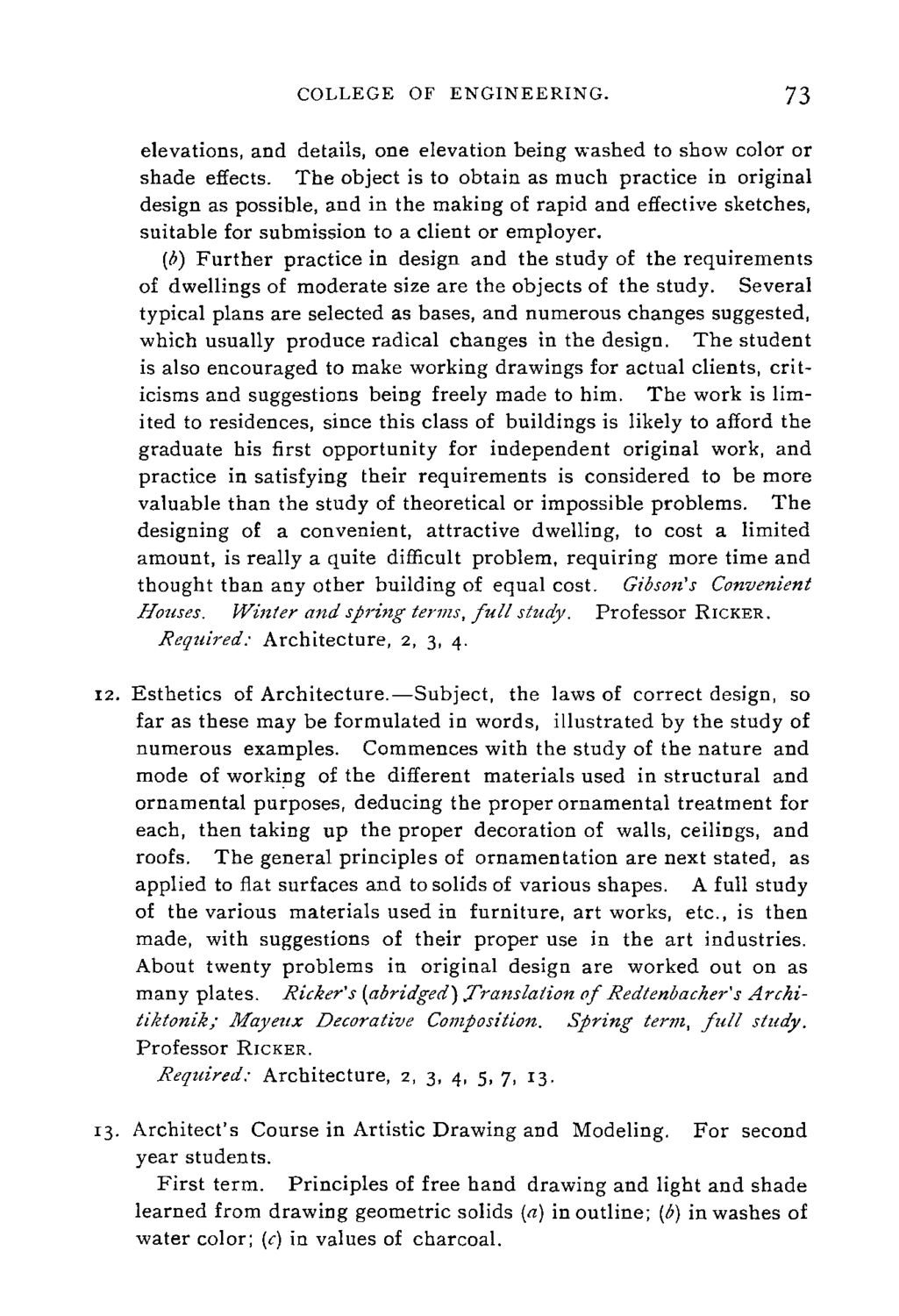| |
| |
Caption: Course Catalog - 1892-1893
This is a reduced-resolution page image for fast online browsing.

EXTRACTED TEXT FROM PAGE:
COLLEGE OF ENGINEERING. 73 elevations, and details, one elevation being washed to show color or shade effects. The object is to obtain as much practice in original design as possible, and in the making of rapid and effective sketches, suitable for submission to a client or employer. (b) Further practice in design and the study of the requirements of dwellings of moderate size are the objects of the study. Several typical plans are selected as bases, and numerous changes suggested, which usually produce radical changes in the design. The student is also encouraged to make working drawings for actual clients, criticisms and suggestions being freely made to him. The work is limited to residences, since this class of buildings is likely to afford the graduate his first opportunity for independent original work, and practice in satisfying their requirements is considered to be more valuable than the study of theoretical or impossible problems. The designing of a convenient, attractive dwelling, to cost a limited amount, is really a quite difficult problem, requiring more time and thought than any other building of equal cost. Gibson's Convenient Houses. Winter and spring terms, full study. Professor RICKER. Required: Architecture, 2, 3, 4. 12. Esthetics of Architecture.—Subject, the laws of correct design, so far as these may be formulated in words, illustrated by the study of numerous examples. Commences with the study of the nature and mode of working of the different materials used in structural and ornamental purposes, deducing the proper ornamental treatment for each, then taking up the proper decoration of walls, ceiliDgs, and roofs. The general principles of ornamentation are next stated, as applied to flat surfaces and to solids of various shapes. A full study of the various materials used in furniture, art works, etc., is then made, with suggestions of their proper use in the art industries. About twenty problems in original design are worked out on as many plates. Ricker's [abridged} ^Translation of Redtenbacher's Architiktonik; Mayeux Decorative Composition. Spring term, full study. Professor RICKER. Required: Architecture, 2, 3, 4, 5, 7, 13. 13. Architect's Course in Artistic Drawing and Modeling. For second year students. First term. Principles of free hand drawing and light and shade learned from drawing geometric solids (a) in outline; (b) in washes of water color; (c) in values of charcoal.
| |